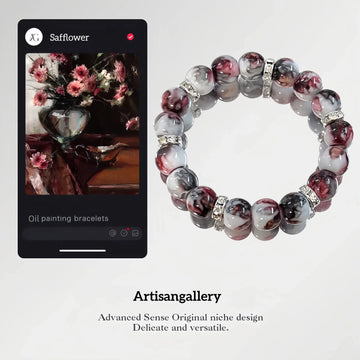Selecting and Using Maintenance Supplies for Stone Bangles
Stone bangles, crafted from materials like jade, agate, or quartz, require thoughtful care to preserve their natural beauty and structural integrity. The right supplies and techniques can prevent damage caused by environmental factors, oils, or accidental impacts. Below, we explore how to choose and apply maintenance tools effectively without compromising the stone’s authenticity or longevity.
Understanding Material-Specific Needs for Cleaning
Different stones react uniquely to cleaning agents, making it essential to tailor supplies to their composition. Porous stones, such as turquoise or opal, absorb liquids easily, so harsh detergents or abrasive scrubbers can cause irreversible discoloration or surface erosion. Instead, opt for a soft, lint-free cloth dampened with distilled water to gently wipe away dust. For non-porous stones like jade or obsidian, a mild, pH-neutral soap mixed with water can dissolve grime without leaving residues. Always avoid acidic or alkaline cleaners, as they may react with trace minerals in the stone, leading to fading or etching.
When tackling stubborn dirt, use a soft-bristled brush—such as a clean makeup brush or a dedicated jewelry brush—to dislodge particles from crevices. Apply light pressure in circular motions to prevent scratching, and rinse the bangle under lukewarm water if soap was used, ensuring all traces of the cleaner are removed. Pat dry immediately with a microfiber towel to avoid water spots, which can dull the stone’s luster over time.
Polishing Tools to Restore Shine Without Damage
Polishing enhances a stone bangle’s visual appeal but requires precision to avoid over-processing. For routine maintenance, a dry microfiber cloth is sufficient to buff the surface and remove fingerprints or oils. For deeper restoration, consider natural polishing agents like a small amount of beeswax or a dedicated stone-safe polishing paste. Apply these sparingly with a soft cloth, working in small sections to maintain control over the shine level.
Avoid synthetic polishes containing alcohol or ammonia, as they can strip the stone’s natural patina or degrade adhesive components in settings. If the bangle features metal accents, ensure the polish is compatible with both the stone and metal to prevent tarnishing or discoloration. After polishing, let the bangle rest in a cool, dry place for a few hours to allow any residual products to evaporate fully.
Storage Solutions to Shield Against Environmental Harm
Proper storage prevents scratches, chips, and exposure to humidity or sunlight, which can alter a stone’s color or clarity. Choose individual storage pouches made from breathable materials like cotton or velvet to cushion the bangle and reduce friction against other jewelry. For long-term storage, place the pouch inside a rigid box lined with acid-free tissue paper to protect against dust and moisture.
Avoid storing bangles in plastic bags or airtight containers, as trapped humidity can encourage mold growth or chemical reactions with the stone. If displaying the bangle, use a shadow box with UV-filtering glass to block harmful light while allowing airflow. For bangles with delicate carvings or inlays, consider adding silica gel packets (not in direct contact with the stone) to absorb excess moisture in humid climates.
Handling and Usage Precautions to Minimize Wear
Even with ideal supplies, improper handling can undo maintenance efforts. Remove bangles before engaging in activities like cooking, cleaning, or exercising to avoid contact with chemicals, heat, or physical stress. When wearing multiple bangles, stack them loosely to prevent clinking, which may cause chips or fractures. For bangles with adjustable cords or settings, check these components regularly for signs of wear, such as fraying or loosening, and address them promptly to prevent loss or damage.
By aligning supply choices with the stone’s properties and using techniques rooted in gentleness, owners can ensure their bangles remain vibrant and structurally sound for decades. This proactive approach transforms maintenance from a chore into a ritual of preservation, honoring the stone’s natural artistry and cultural significance.







